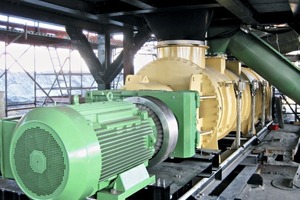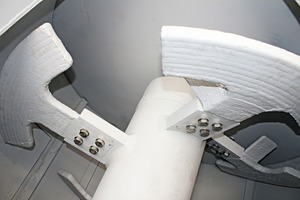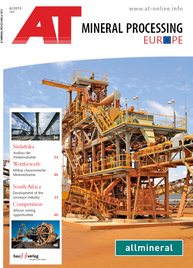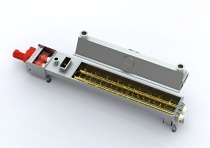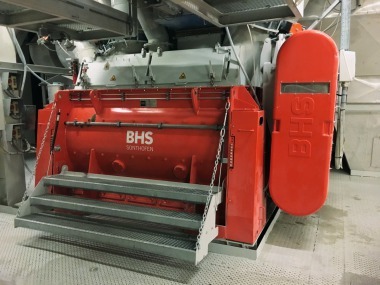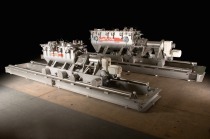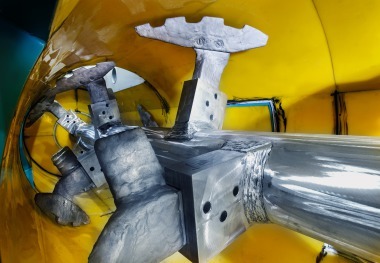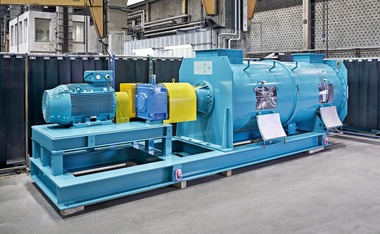Technical solutions for high-capacity mixers
Ash, dust and other residue produced during the extraction and further processing of mineral resources are no longer merely a waste product. They are used, for instance, in road construction and the building materials industry. To selectively treat, process and condition these materials, specialized mixers are used. Depending on the design of the mixing process and, for example, with the addition of water or additives, the materials can be wetted, hardened or leached. The products can be (permanently) landfilled, ready for transport or also reused. e.g. as binders and granulates, etc. In view of the often very high throughput rates and severe stresses to which the mixers are subject, it is all the more important to realize rugged practical solutions tailored to requirements down to the last detail.
For a customer company in the basic materials industry, the machine specialist SEGLER has developed and engineered a high-capacity mixer (Fig. 1). This single-shaft, continuously operating mixer achieves a rate of 250 t/h and is designed for round-the-clock operation (24 hours/365 days per year). The mixed material consists of power plant ashes and overburden from open-cast mining. With the addition of water and additives, the components are processed to a no-dust product that can be landfilled. This reduces the impact on the environment and enables safe disposal. In the design, SEGLER’s engineers attached importance to the high wear resistance of the mixer, a reliable drive solution and comfortable inspection/maintenance options.
Through two separate feed nozzles, the components are fed continuously to the mixer. In combination with the high peripheral speed, the special geometry of the height-adjustable mixing blades generates a fluidized bed. Water and other additives are sprayed in mist form by means of a multistage feeding device. The overall geometry of the mixer ensures optimum mixing of the materials. Every single grain of the material being mixed material is brought into orbit and reliably wetted. A no-dust product without lumps is formed in very short residence times in the mixer. Via discharge nozzles and discharge chute, the product is then fed to a belt conveyor.
The mixing blades are given effective and durable wear protection with an all-over weld-on hard facing with a nanoalloy. This contains a high volume percentage of boron carbides that are embedded in a nanocrystalline microstructure on iron basis. A precision hard facing process with a high degree of automation guarantees cost-efficient manufacturing, high reproducibility of the weld seams and very low dilution with the base material. Even one single layer provides optimum wear protection. The result is high abrasion and erosion resistance, as well as improved impact resistance compared to conventional ultra-hard facing. This procedure has proven effective many times over in industrial application (Fig. 2). Welded-in flat bars in the mixer housing are another design protective measure. With this an all-over lining of mixed product is formed in the mixer. This durable protective layer significantly lengthens the lifetime of the mixer housing.
The Promix paddle mixer is equipped with a reliably operating drive system adapted to the needs of the mixing process. This consists of an a.c. motor with a nominal power of 200 kW, a hydraulic centrifugal coupling, an industrial spur gear and an elastic, fail-safe claw coupling. The drive elements are therefore uncoupled, making for easy replacement. Thanks to the hydraulic centrifugal drive, any vibrations and jolts are effectively dampened. Not only the motor and gears, but all downstream drive elements profit from this.
The mixer was realized in a heavy-duty industrial design. The mixer housing is designed as an extremely rigid stable welded steel construction with additional struts. The end shields (with the mountings for the shaft seal and bearing brackets) are strengthened with ribs. The hollow steel shaft rests on a pedestal block structure. The position of the bearings can be adjusted over all axes by means of adjusting screws to align the shaft to the seal casing. Adjustable glands seal the mixer shaft openings. Shaft sleeves with torsion-free, fine-ground, hard-faced running surfaces prevent wear of the shaft journals, thus increasing the lifetime of the mixing shaft.
Four generous inspection openings enable precise inspection, thorough cleaning and easy maintenance. They are equipped with safety switches and fast-action tensioners, sealed reliably with a profile packing and solidly stiffened. The flange end shields can be taken off if necessary; the shaft can therefore be easily replaced. As the mixing tools are bolted on the shaft by means of C-sections, they can be replaced with minimum interruption of the mixing process.
Depending on the mixing application and requirements, SEGLER Promix mixers are designed and engineered in a wide range of models. For instance, hollow steel core shafts in stainless steel plate are used as well as duplex steels, crescent liners and a wide range of facing processes. Additional functions such as tempering, coating, deagglomeration or drying can also be performed by Promix mixers. Besides continuously operating mixers, SEGLER also supplies single- and multi-shaft batch mixers for the worldwide market. If required, specially adjusted feeding, shut-off and discharge equipment can be supplied too.

